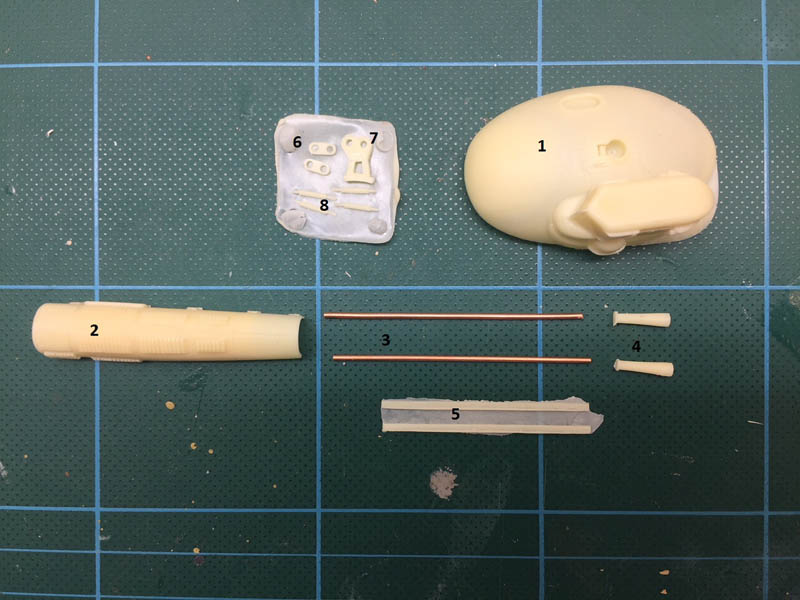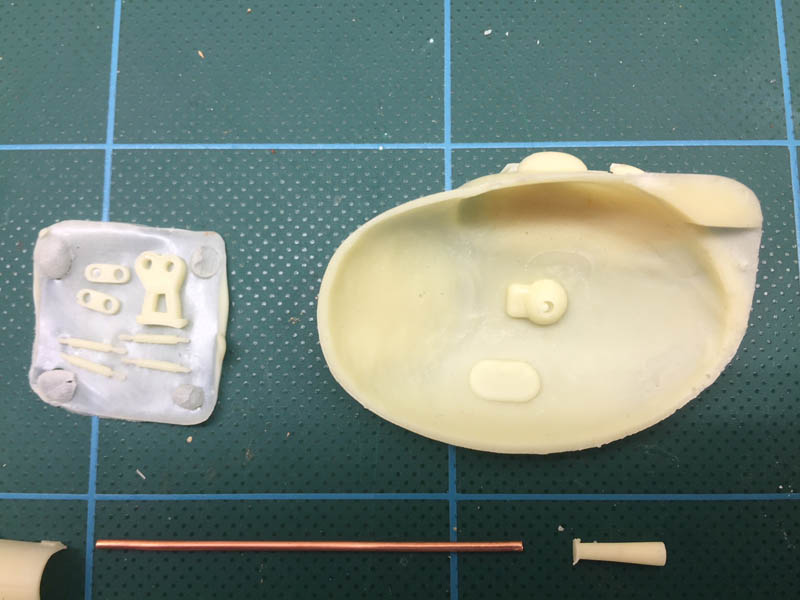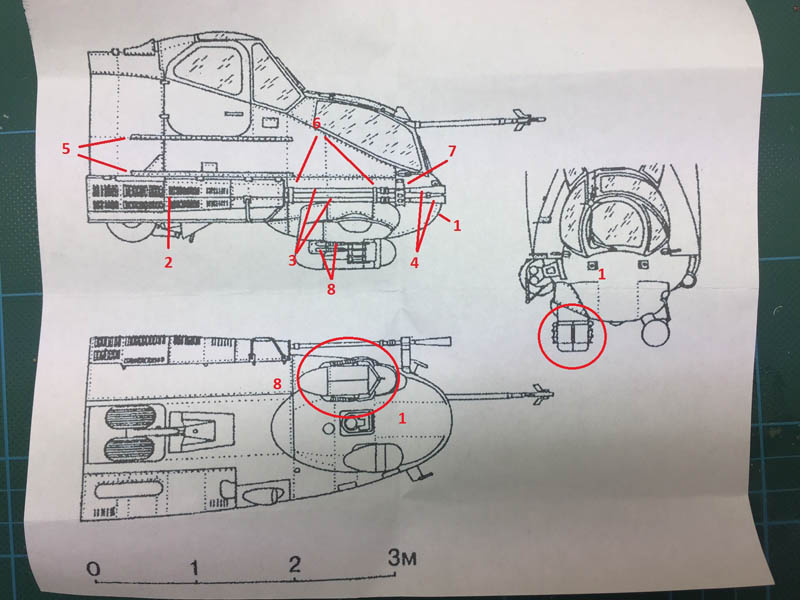Lemkits | 1/35 Mil Mi-24P Conversion
Reviewed by Kylie Newton

I located this little gem whilst looking for something else, and I am very pleased to have, as it is a very useful conversion to make your Trumpeter Mi-24D into a Mi-24P.
I ordered it directly from the maker at lemkits.com for a, to me, reasonable price, and it arrived in the post soon after. I think the most difficulty I had was convincing my bank to make the payment as the website is in Eastern Europe.
The conversion arrived in what looks like a handmade cardboard lid and tray box, well protected in a small snap lock plastic bag wrapped in bubble wrap. On the box-top is a small printed cut-out of the conversion. I was a little apprehensive when I saw the box as it is a little rough, and was enormously relieved when I opened the box and saw the contents for the first time.
The contents of the box consist of a small, literally, printed page three view schematic of the starboard side of the Mi-24P’s nose with a scale at the bottom, two lengths of copper rod, a single piece casting of the gun fairing, two lengths of reinforcing for above the fairing and under the cockpit, a “wafer” cast consisting of two spacers for the barrels, a bracket fixing the barrels to the hull, and four actuators for the sight; a single large casting for the chin, and two muzzle flash hiders.
General observations noted only a couple of pin-prick air bubbles, and some flash that is easily removed with a sharp scalpel. I know this as I did it in less time than it took to type this out.
This conversion does not require any surgery to the donor kit, and merely glues in place. The large, flawlessly cast chin is hollow and replaces the kit part perfectly. The edge of the chin will require careful clean up and is a good match for the contour of the forward most part of the Hind. Comparing this to photos of the actual “Hind F” shows that the engineering isn’t quite as refined or accurate as can be found in the West, so I wasn’t too hung up on achieving a seamless join.
The fairing is very good, with only a couple of pin-prick air bubbles to be found. On my example, there was an air bubble in one of the vents, but nothing to get hung up about. The vents themselves are not open, something not possible in a cast resin piece, maybe if it were 3D printed. One observation, and a small criticism is that there are no locating holes for the “barrels” to sit in; whilst not a deal breaker, it would have been good to ensure that the barrels are in the correct place, and provide a strong joint.
Construction is straight forward in that the two lengths of copper, the barrels, are inserted through the bracket, the two spacers, and onto the small end of the fairing. This is all fixed to the side of the Hind below the cockpit. Above this, and below the cockpit, the two reinforcing ribs are fixed. And lastly, underneath the fuselage the “chin” is fitted. There are two actuators to attach either side of the forward looking sight. And it's finished.
My only criticisms are that there is no parts list so you don’t know what you have, no measurements whatsoever to show you where to place things, and I’d of liked to see two turned metal barrels with integral flash hiders. This last feature may have added to the price of the conversion, but I’d take that as a given.
If you want to be really picky, the bracket fitting the barrels to the hull side is not solid as in the kit, but rather has a ‘T’ cross section, and is hollow around the barrels themselves. And, on the real thing, there is a collar at the base of the flash hider with a prominent bolt fixing the flash hider to the barrel; this is not represented in the kit. Both are easily remedied by a competent modeller willing to put in the work.


In conclusion, I liked this so much, I’m contemplating buying another one; it is a winner.
I am working on measurements for this, and will add them in due course.
© Kylie Newton 2018
This review was published on Friday, August 24 2018; Last modified on Friday, August 24 2018
